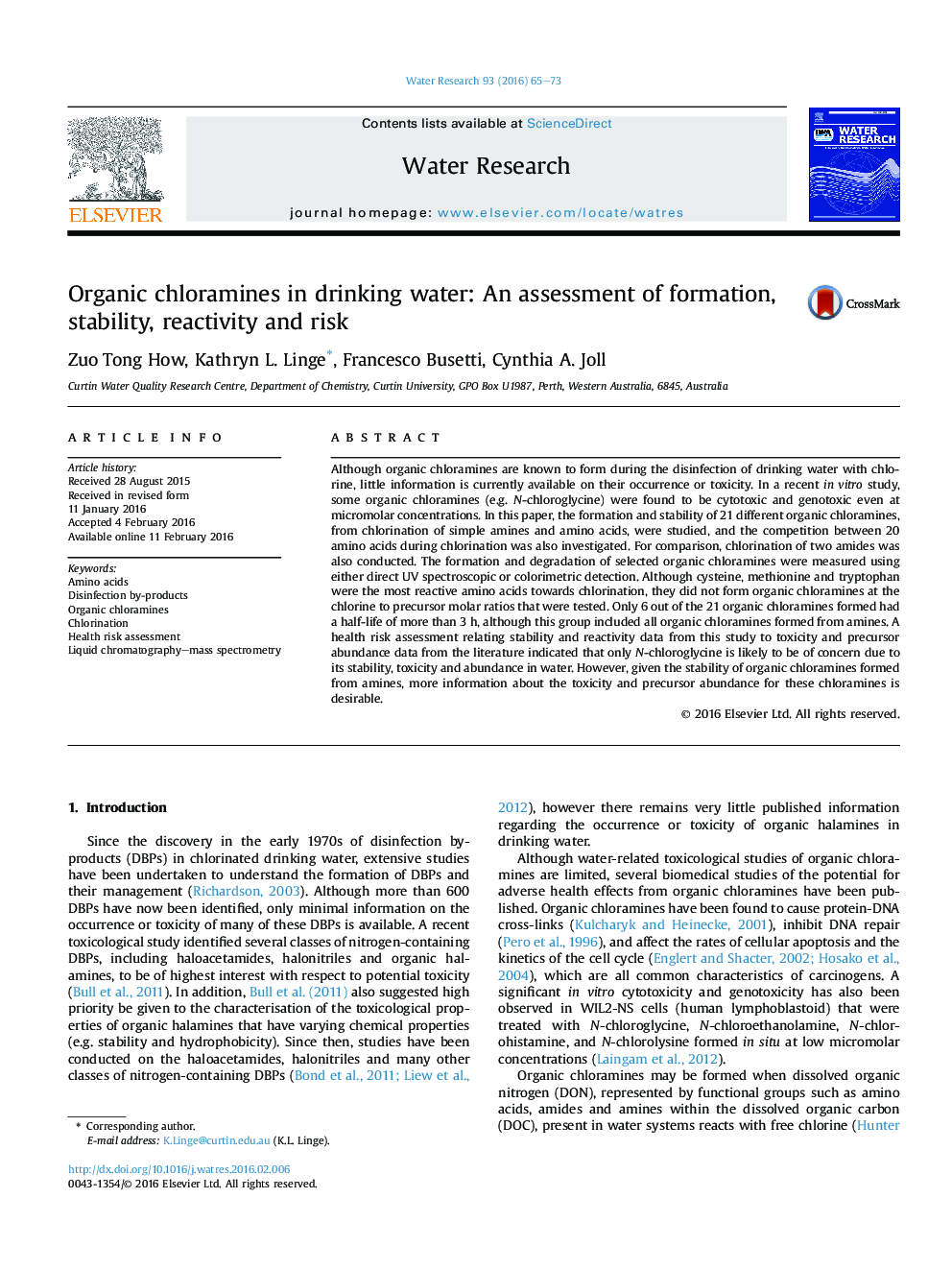| کد مقاله | کد نشریه | سال انتشار | مقاله انگلیسی | نسخه تمام متن |
|---|---|---|---|---|
| 4480936 | 1623075 | 2016 | 9 صفحه PDF | دانلود رایگان |
• Three amines and 18 of 21 amino acids formed organic chloramines after chlorination.
• Neither of the two amides tested formed organic chloramides.
• Fifteen of the 21 organic chloramines that formed had a half-life less than 3 h.
• Glycine, lysine and ethanolamine produce stable and potentially toxic chloramines.
• Toxicity and precursor studies for other stable chloramines are still required.
Although organic chloramines are known to form during the disinfection of drinking water with chlorine, little information is currently available on their occurrence or toxicity. In a recent in vitro study, some organic chloramines (e.g. N-chloroglycine) were found to be cytotoxic and genotoxic even at micromolar concentrations. In this paper, the formation and stability of 21 different organic chloramines, from chlorination of simple amines and amino acids, were studied, and the competition between 20 amino acids during chlorination was also investigated. For comparison, chlorination of two amides was also conducted. The formation and degradation of selected organic chloramines were measured using either direct UV spectroscopic or colorimetric detection. Although cysteine, methionine and tryptophan were the most reactive amino acids towards chlorination, they did not form organic chloramines at the chlorine to precursor molar ratios that were tested. Only 6 out of the 21 organic chloramines formed had a half-life of more than 3 h, although this group included all organic chloramines formed from amines. A health risk assessment relating stability and reactivity data from this study to toxicity and precursor abundance data from the literature indicated that only N-chloroglycine is likely to be of concern due to its stability, toxicity and abundance in water. However, given the stability of organic chloramines formed from amines, more information about the toxicity and precursor abundance for these chloramines is desirable.
Figure optionsDownload high-quality image (233 K)Download as PowerPoint slide
Journal: Water Research - Volume 93, 15 April 2016, Pages 65–73
